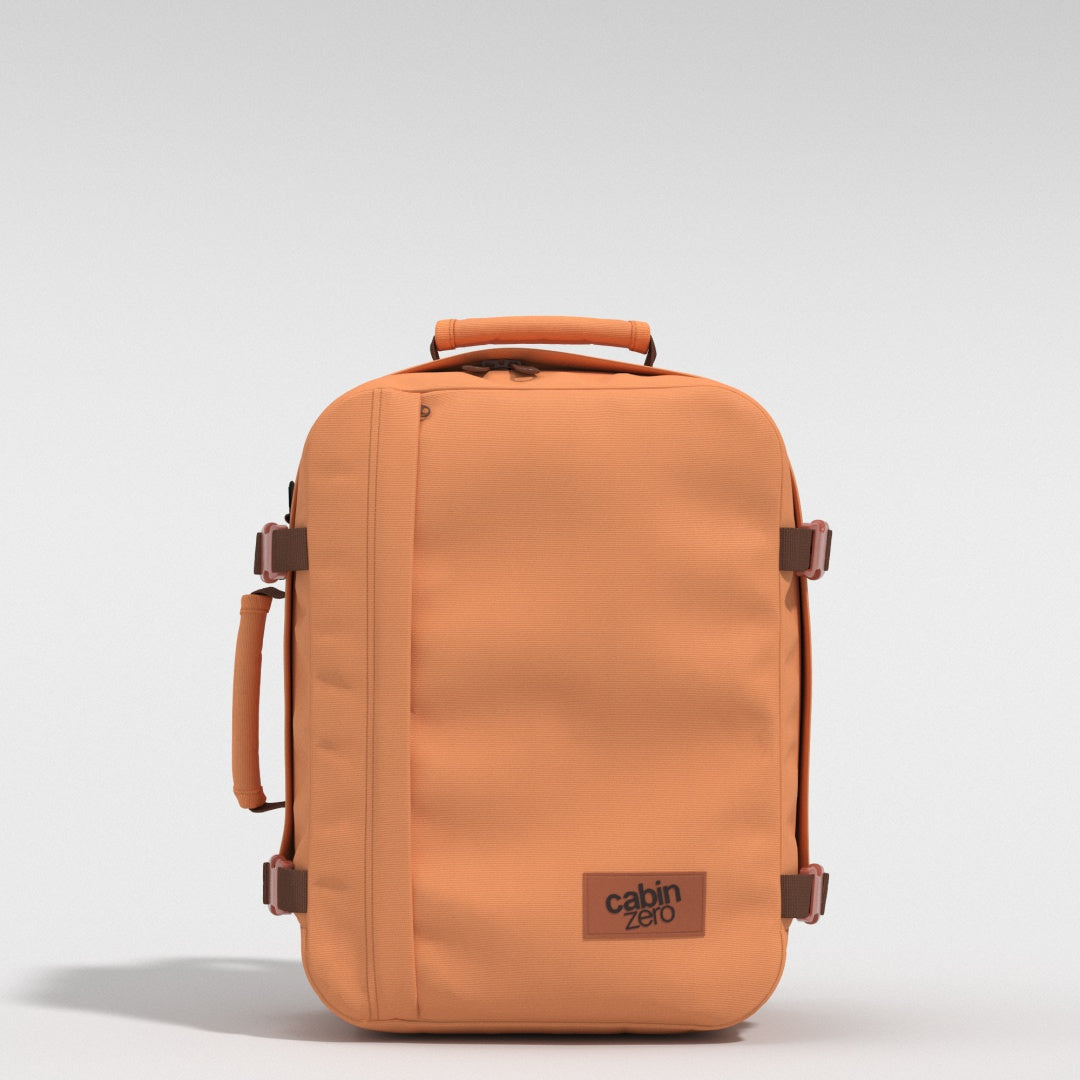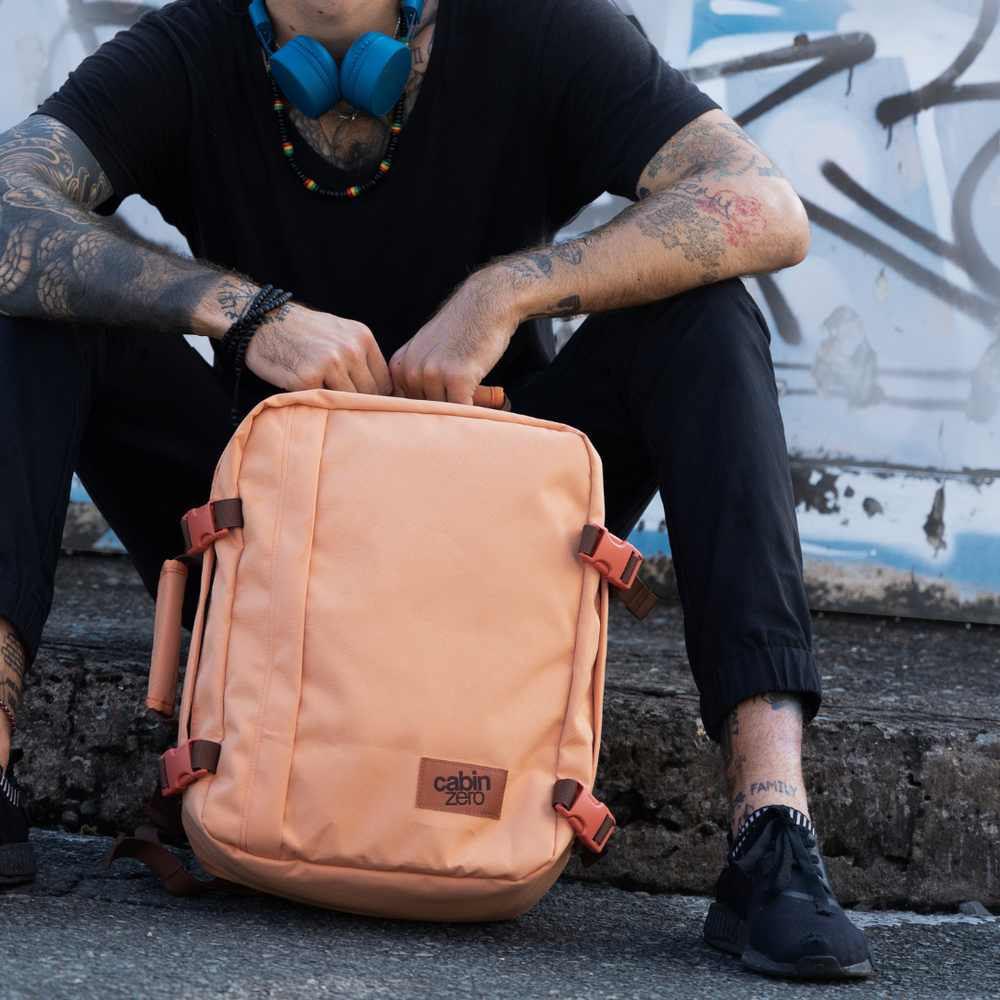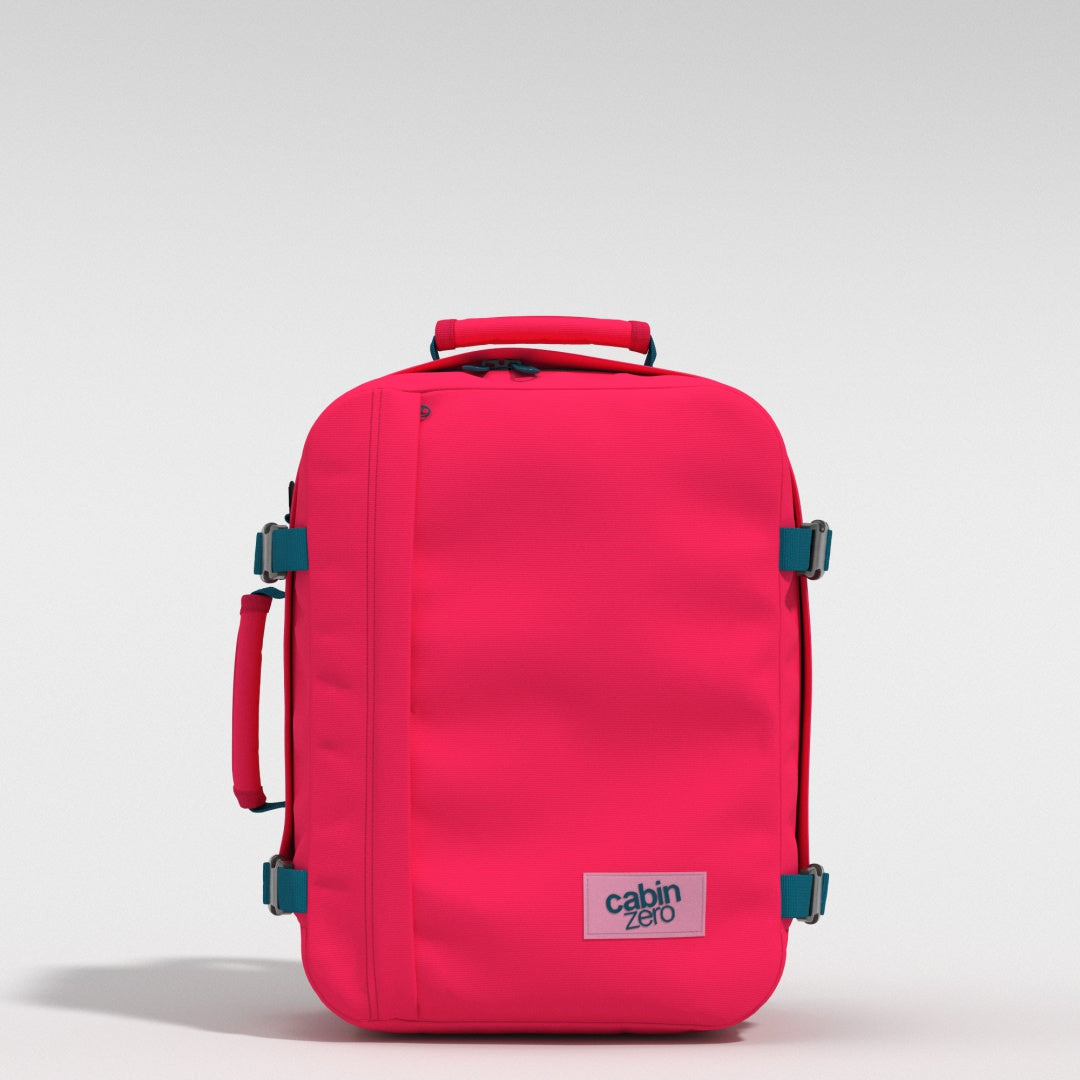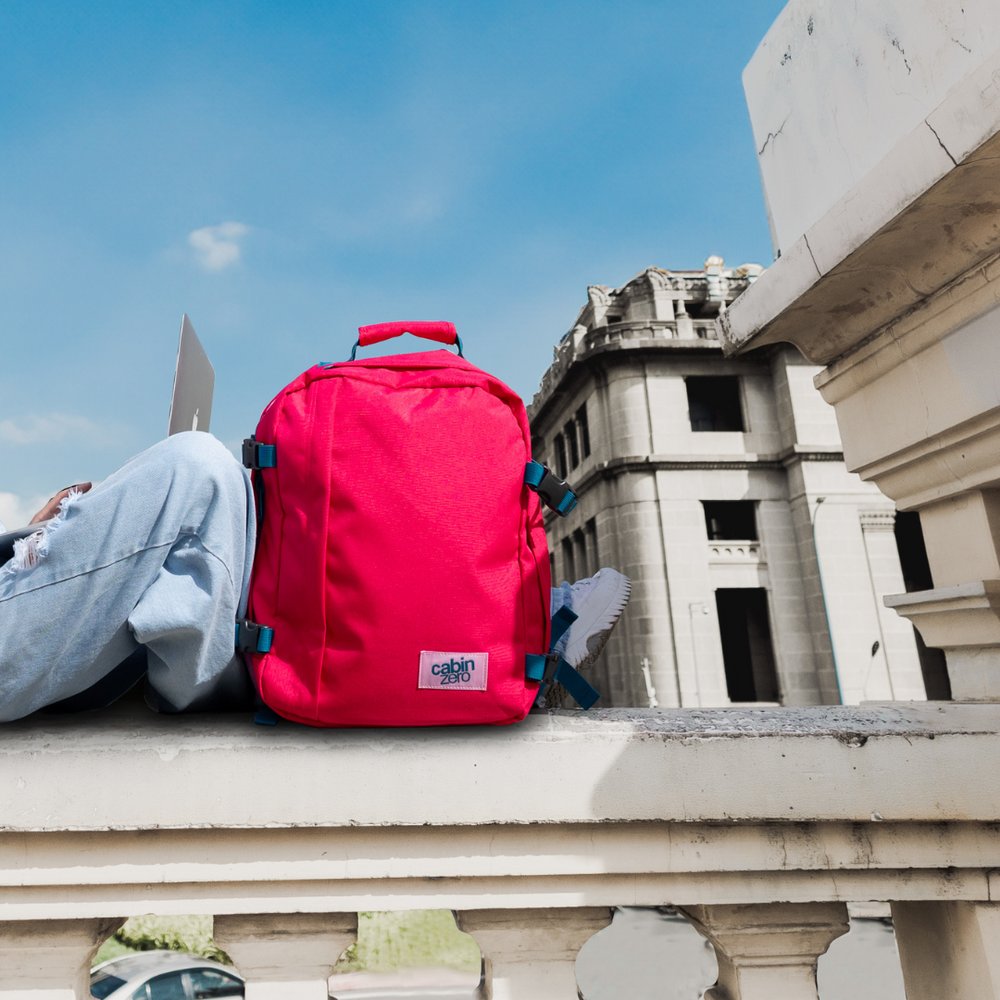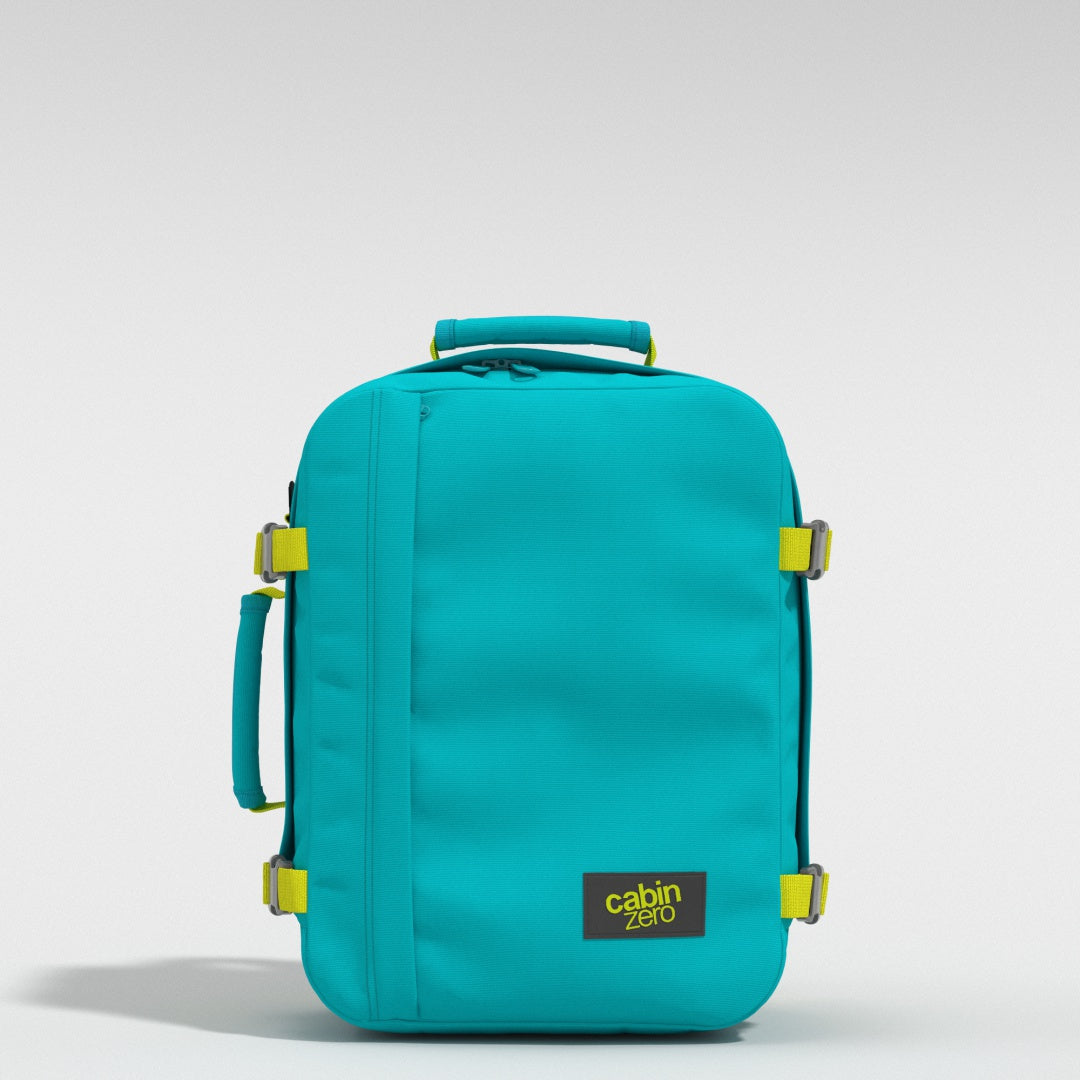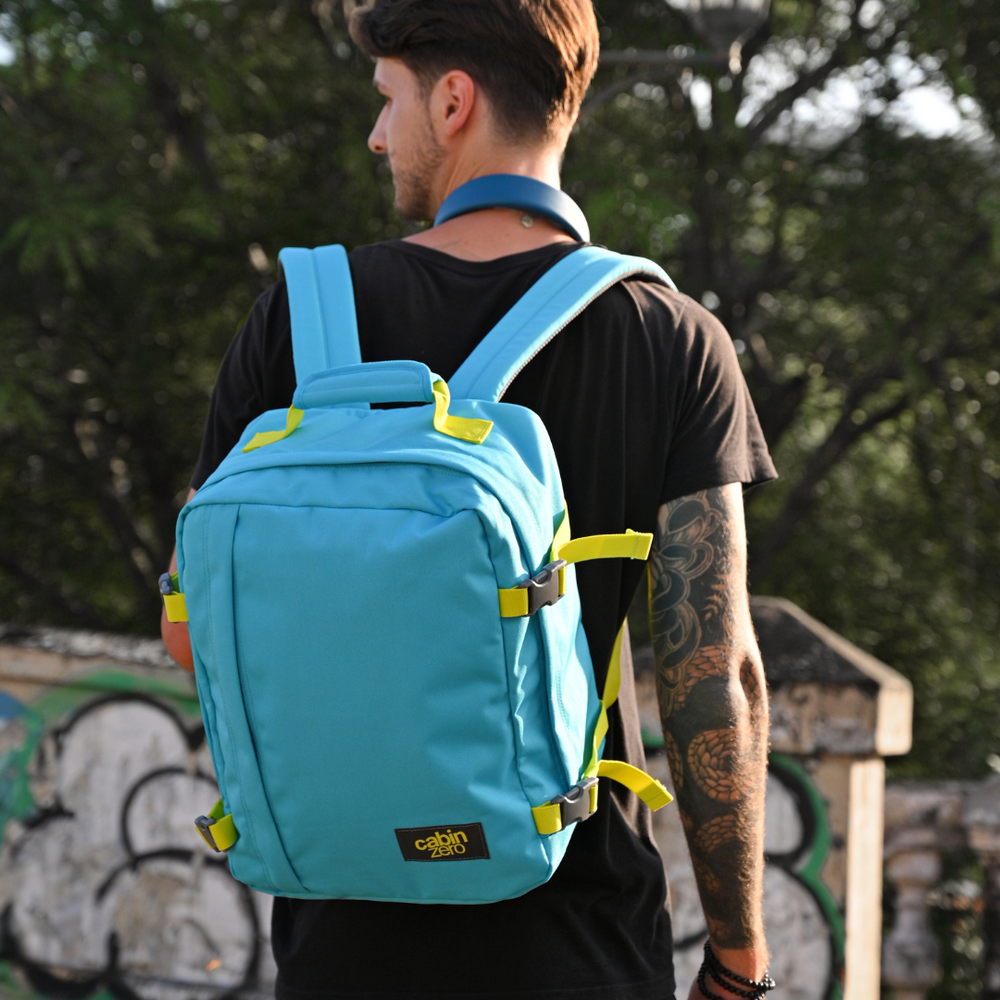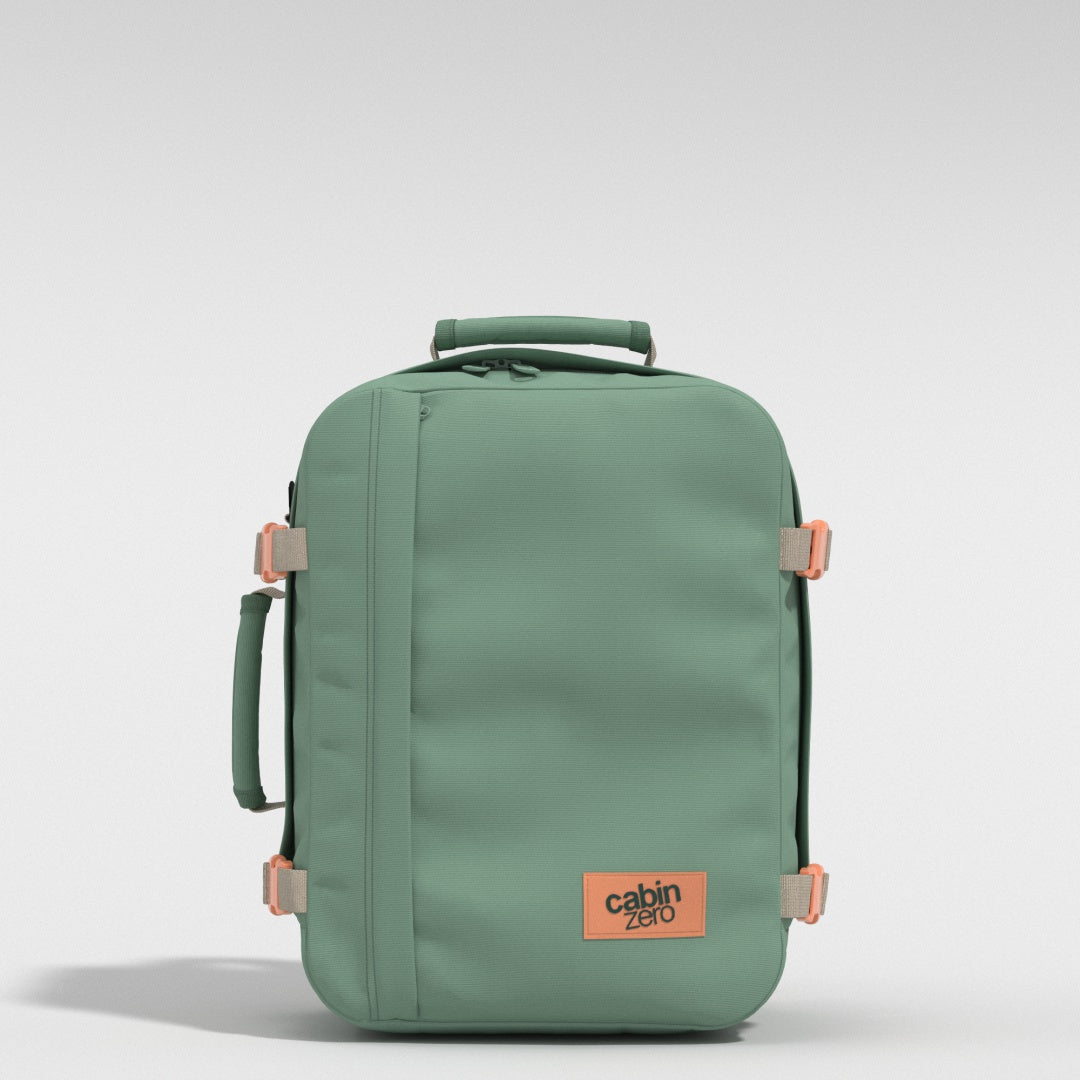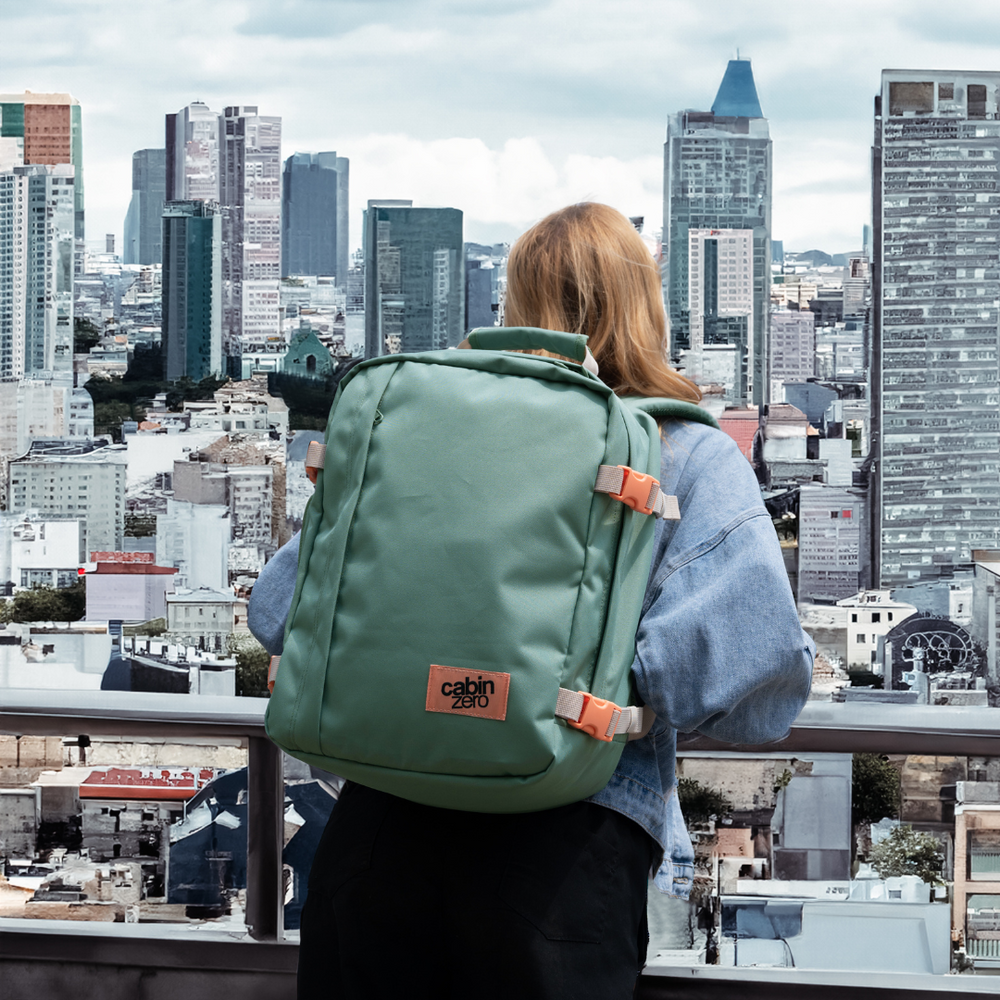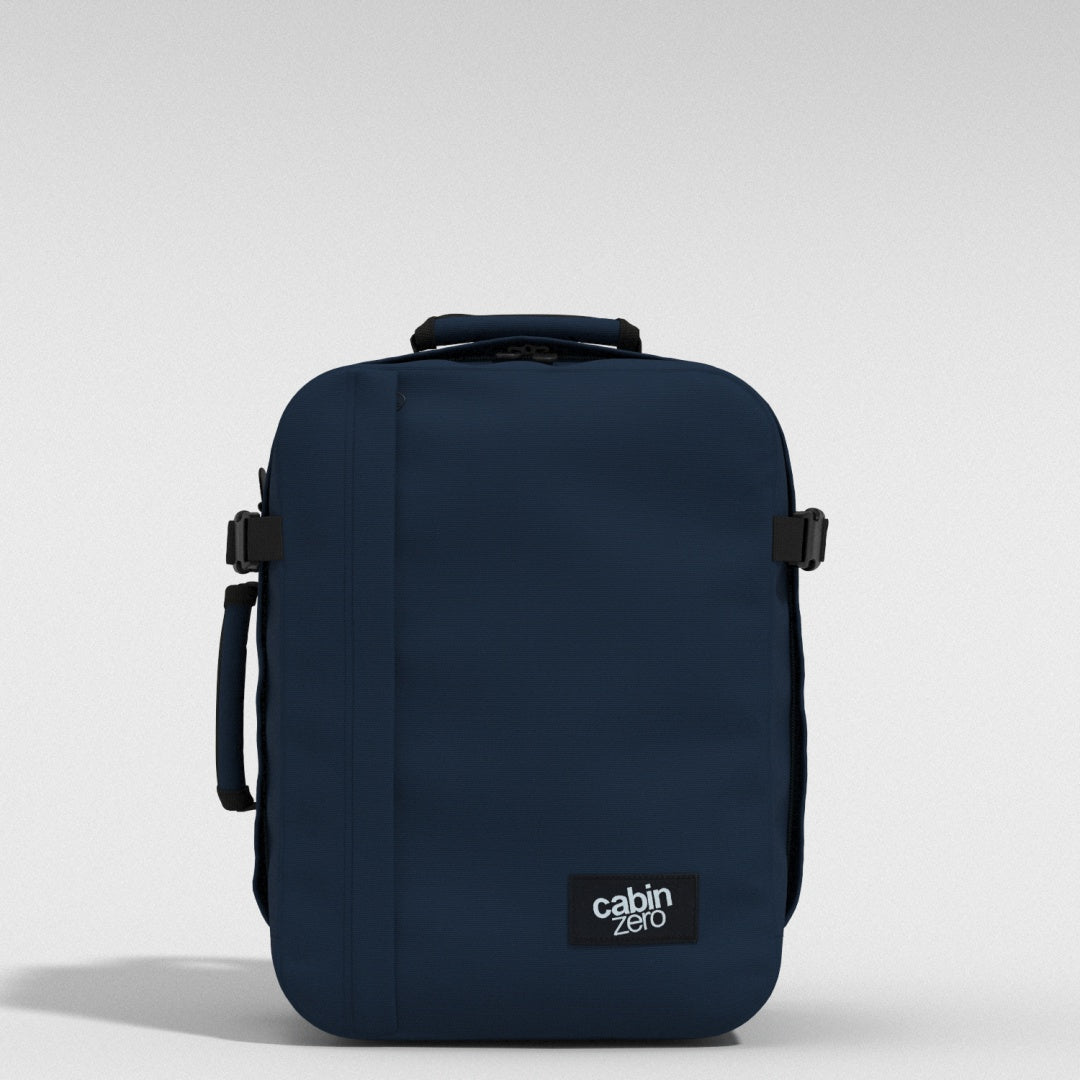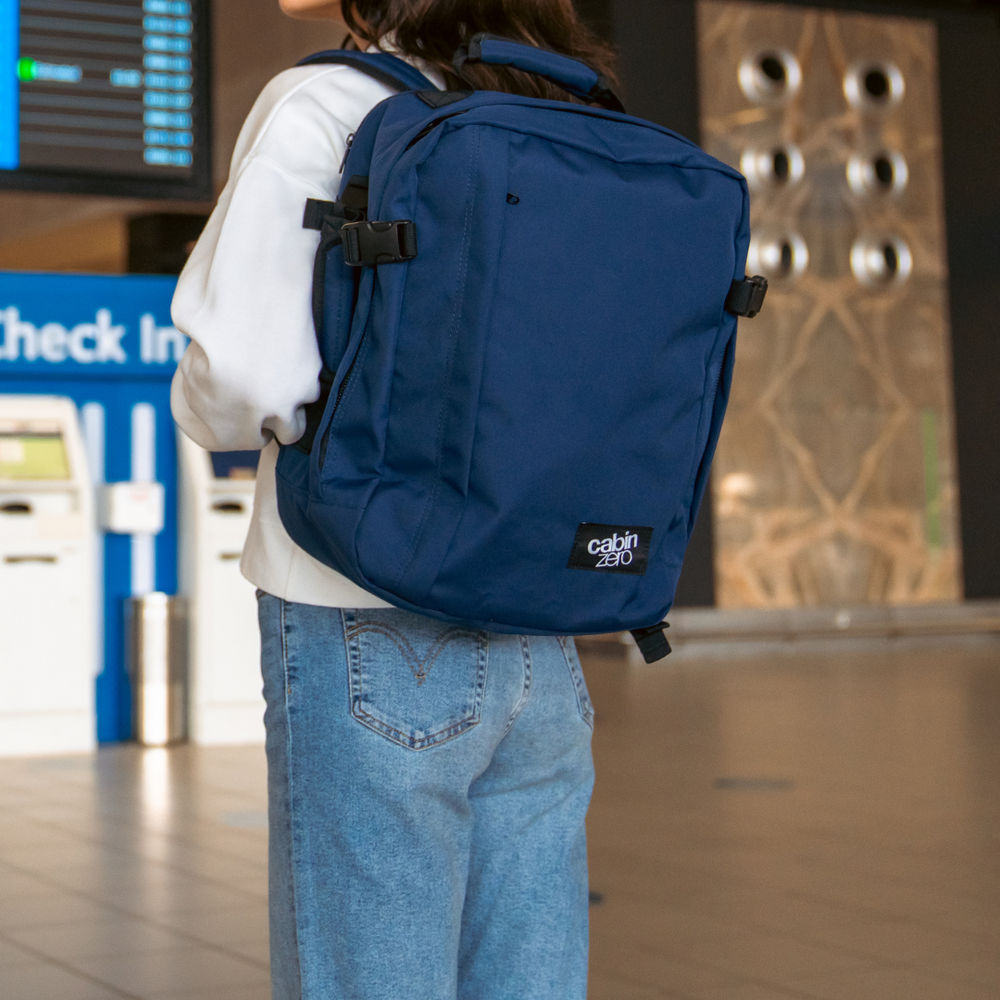1. Check the Dimension Before Your Flight
Most airlines allow carry-on bags up to 22 inches (56 cm) tall, 18 inches (45 cm) wide, and 10 inches (25 cm) deep. And that includes any wheels, top handles, and any side pockets.
But that doesn’t mean you can skip checking. We always recommend that you visit your airline’s website before your trip to double-check the allowed carry-on luggage size. It only takes a minute, and it can save you a lot of trouble at the airport.
Some low-cost airlines (like Ryanair or Wizz Air) are known for having stricter size rules. They do this to reduce overhead bin use and speed up boarding. In contrast, full-service airlines such as British Airways or Qatar Airways might offer a bit more flexibility, especially if you’re flying business or first class.
In case you're unsure how to measure your bag, here's how we measure ours:
- Start by placing your bag on a table or some other flat surface. Stand it upright with telescopic handles (if any) retracted.
- Measure the height from the top of the bag (the top handle usually) to the ground. Don't forget to include the wheels!
- Measure the width by taking the bag from side to side at its widest point:
- For hard-shell bags, you can place the bag on its back and measure across.
- For backpacks or soft-sided bags, it’s better to place the bag as you would normally carry it, and then measure across the widest point. Just remember to include any side pockets or straps that stick out. This will give you a more accurate idea of your carry on luggage size and how much space the bag takes up when fully packed.
- Take the depth from the rear of the bag to the front, accounting for any expanded areas or bulging due to packing.
Once you’ve got the height, width, and depth, just add them together. That will give you the total linear size. After packing, your bag still needs to fit within the airline’s limit.
The more accurately you measure your bag, the easier it is to follow airline rules.
2. Don’t Forget Weight Limit
If your hand luggage is too big, there’s a chance the airline crew might stop you at the gate. They may also ask you to put it in the hold with the checked bags. Either way, it’s best to go for hand luggage that’s light enough for you to lift and stow in the overhead compartment without a struggle.
Just like with the carry on luggage size, always double-check the weight allowance on your airline’s official website before your flight. The most common way to weigh your hand luggage is by using a home scale: either a luggage scale, a bathroom scale, or a mix of both.
A quick tip: Try to keep your bag at least 1.3 kg lighter than the airline’s maximum hand luggage allowance. That’s because home scales and airport scales might not always give the same reading. It’s better to be safe than sorry!
Now, think about what suits your journey best. It could be a small suitcase or a travel backpack with a laptop compartment. Just make sure it fits within your airline’s carry on luggage size limits. The key here is to pick one that’s as lightweight as possible when empty, like a CabinZero backpack, which can weigh as little as 600g. That will give you more freedom to pack what you really need without wasting precious weight on the bag itself.
3. Pack Smart
What’s more, here are a few simple tricks that can come in handy if you want to travel light with just a carry-on and still fit in as much as possible:
- Use packing cubes - They help keep things tidy and compress your clothes so you can fit more. We also use them to separate clean and dirty clothes, shoes, or even to store electronics safely away from moisture.
Make better use of space with packing cubes by CabinZero.
- Avoid overpacking or bringing unnecessary items - Don’t throw anything ‘just in case’ into your carry-on luggage. A well-organised carry-on is easier to carry, and it’ll give you more room to bring back souvenirs.
- Wear your heaviest or chunkiest clothes on the plane - like a thick coat, hiking boots or chunky trainers. And if you don’t mind a bit of heat or a few curious stares at the airport, layer up with a few extra shirts or trousers. There’s nothing wrong with getting around baggage fees, as long as it’s within the rules!
- Use a TSA-approved lock - On full or smaller regional flights, airlines frequently run out of overhead bin space and require passengers to gate-check their carry-on bags at the last minute. When your bag leaves your possession to go into the hold, you will want it to be securely locked.
4. Know The Differences Between Carry On vs Personal Items
The most important difference between a carry on bag and a personal item is size, specifically your airline's carry on luggage size. A carry-on is usually bigger and will fit in the overhead compartment, while a personal item is smaller and will fit under the seat in front of you.
Wrapping Up
Turns out, getting your head around carry on luggage size rules isn’t that tricky after all, right? You can save the size chart we've shared in this post, or simply take a few minutes to check your airline’s website before you start packing. And one more thing – why not choose a CabinZero bag as your travel buddy? Our designs fit even the strictest airline rules. From today on, pack more and stress less!





